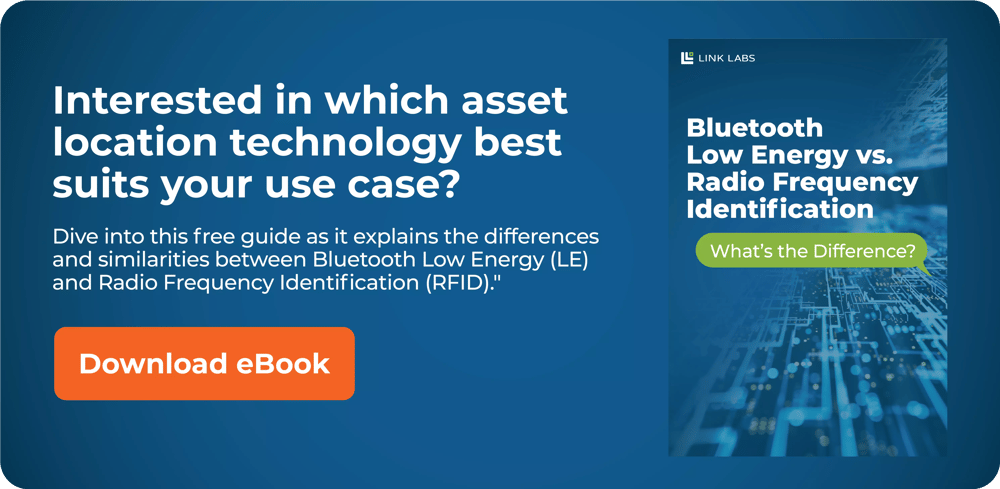Passive RFID excels at what it was designed for—inventory tracking.
Depending on your tracking environment and how static or dynamic your inventory situation is, passive RFID may be a great option for you. Airlines, for example, use passive RFID to tag life vests with their expiration date. Instead of physically checking the plane for vests and manually confirming all the expiration dates —a process that could take over an hour on a large plane—employees can complete the check in just minutes with a handheld RFID scanner. That said, if you don’t have the ability to use either a chokepoint system or a handheld scanner for your inventory use case, passive RFID might not be the best option.
While passive RFID works well to confirm the presence of a tagged item in a specific room, it doesn’t tell you where an item is located. If you need this kind of functionality, there are plenty of passive RFID alternatives on the market today that could work very well for your specific use case. Below, we’ll examine four of those technologies you might want to consider.
4 Passive RFID Alternative Technologies To Consider
1. Active RFID
Let’s say your company has created a product that promotes safety for school children, tracking them as they get on and off the bus. There’s a good chance a passive RFID reader wouldn’t have the necessary accuracy to catch every child getting on and off the bus—which could render your system quite inaccurate.
Learn more about how large manufacturing operations track and monitor materials in this ebook.
A good passive RFID alternative in this case would be active RFID. Active RFID technologies like AirFinder are often attractive due to their low cost, high scalability (due to long read range), and long battery life. And because active RFID tags continuously (or regularly) transmit their location, you’re far more likely to get an accurate reading.
2. Ultra Wide-Band (UWB) RTLS
If you need extreme location accuracy regardless of tag or infrastructure cost, then ultra wide-band RTLS is a great passive RFID alternative to consider.
For example, you may need an extremely accurate way to keep track of constantly moving inventory in a shipping warehouse. Using ultra wide-band technology in your scanner, you could scan the location of each piece of inventory. Thanks to ultra wide-band’s centimeter-range accuracy, you can almost precisely identify the scanned item’s exact location.
3. WiFi RTLS
WiFi is another alternative for passive RFID. Some people are drawn to WiFi RTLS because they are, at times, able to use existing WiFi infrastructure (with some firmware updates). WiFi is also more accurate than some technologies, like active RFID, because it uses time-of-flight (TOF) measurements with a wider bandwidth.
That said, WiFi is much more expensive than active RFID and much less accurate than ultra wide-band RTLS, so we don’t consider it a strong contender as a passive RFID alternative. To learn more about WiFi’s shortcomings, take a look at this article.
4. Infrared RTLS
Infrared RTLS signals can’t pass through walls. So if you’re looking for a connectivity solution to do inventory tracking in a hospital storage room, for example, infrared RTLS is a good passive RFID alternative. But if you are doing inventory in an open bay area, on the other hand, multiple infrared receivers might pick up a signal from one tagged item, which would decrease your location accuracy.




